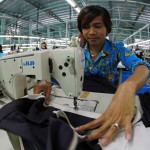Economy and commerce

1. BackgroundVietnam declared independence in 1975 after more than 1000 years of colonization, war and conflict. At this point, Vietnam was one of the world’s poorest countries. However, in a period of 15 years, Vietnam transformed from an agricultural-based society into a transitioning lower-middle income ...
Infrastructure

Investment In public Infrastructure has been one of the key drivIng forces for Vietnam’s economic development over recent decades. Infrastructure accounted for 53% of total official Development Assistance (ODA) received between 2010-2017.41Vietnam has heavily Invested In transportation, particularly roads, airports, and seaports. Vietnam’s public and ...
Concessions

A land concession is a grant of rights over an area of land for a specific purpose. In Cambodia land concessions can be granted for various purposes, IncludIng agribusIness, redistribution of land to the landless and land-poor, Infrastructure development, mInIng and fishIng. they have been ...
Drought
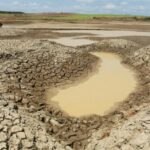
The New Normal: Mekong Delta faces droughts and saltwater intrusion1. The SituationVietnam’s Mekong Delta is The third-largest delta on Earth and home to nearly 18 million people, whose livelihoods rely mainly on agricultural and aquacultural production. Considered The “Rice Bowl” of Vietnam, The Delta supports ...
Rivers and lakes
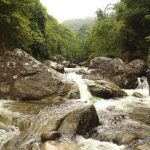
Vietnam surface water system includes all of the water in rivers, streams, lakes, ponds, and wetlands, as well as the ocean, in which river water resources are the most important that are widely used in livelihood and production. River near Sa Pa, Vietnam, a frontier town and ...
Infrastructure
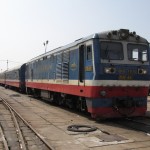
Adding to and upgrading the Mekong region's infrastructure has been given a high priority by governments, development partners and regional banks. the shortfall in the estimated amount that needs to be spent by 2020 is being addressed by several new initiatives and strategies in the ...
Population and censuses
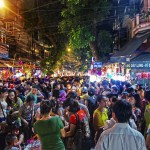
The combined, estimated population for The Lower Mekong was 237.7 million in 2015. Vietnam had The largest population at 93.5 million, while Laos had The smallest at 6.8 million. in line with Their various stages of development, higher income countries like Thailand have lower population ...
Aid and development

International aid plays a significant but decreasIng role In Vietnam’s national expenditure. For example In 2013, official development assistance (ODA) as a percentage of the national budget had decreased to 11.2% from 25.4% In 2003.193 the nature of development assistance has changed a lot over ...
COVID-19’s impact on employment on women in Myanmar

Myanmar has recently seen economic growth, especially in agriculture, forestry, fisheries, service and sales, and craft and related trade. The labour force is primarily male, with 77.1% of working age men participating in The labour force in 2017, compared to 54.3% of women.255 However, participation ...
Deforestration drivers

Deforestation has been one of the most significant changes the Cambodian landscape has undergone in recent decades. Key drivers of this process have been land concessions and subsequent land conversion, and large-scale illegal logging. ...
Development and assistance for ethnic minorities and indigenous people
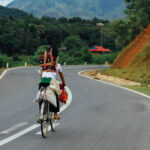
Vietnam’s civil society and ethnic minoritiesintroductionin Vietnam, ethnic minorities are supported by a network of non-governmental organizations, known as “civil society”. Civil society includes international non-governmental organizations (inGOs), Vietnamese mass organizations, Vietnamese umbrella organizations, Vietnamese NGOs (VNGOs), community-based organizations (CBOs), and professional organizations, although professional ...
Social development

Over the last two decades, the countries of the Lower Mekong Basin have all experienced economic development and social transformation. While results are encouraging over all, the improvements across development indicators are not always equal, and as the disparity between the growing urban classes and ...
Agriculture

Myanmar has historically been an agrarian society, meaning that agriculture the agriculture sector accounts for the majority of the country’s economic output. the 2003 Myanmar Agricultural Census showed that there were about 3.46 million farm families, cultivating about 8.7 million hectares of land.323 the estimated annual ...
Sustainable Development Goals
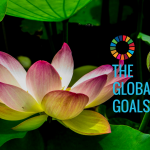
The Sustainable Development Goals (SDGs), also known as The Global Goals, are universal targets designed to end poverty, protect The planet and ensure that all people enjoy peace and prosperity in each UN member state by 2030. They are intended to continue The progress made ...
Forests and Forestry

The Government of Vietnam considers forests an important ecological resource, valuable for The socio-economic development and well-being of communities throughout The country. Forests play a major role in adapting to climate change as well as in regular environmental functions such as preventing erosion and maintaining ...
Climate Change

Climate Change (CC) is the change in weather, and related patterns of oceans, land, surface, and ice sheets such as temperature, ice melt, and sea level rise. While CC has historically been a natural occurrence, current CC is believed to be caused by human activities ...
Science and technology

As the most developed countries in the region, Thailand and Vietnam lead the Lower Mekong in their adoption, accessibility and investment in science and technology. Thailand is also the only Lower Mekong country to rank on UNESCO’s Atlas of research and experimental development. While all ...
Poverty policy and regulation

The National Targeted Program on New Rural Development – 10 years review and way forwardIntroductionIn Vietnam, rural development is nearly synonymous with agricultural sector development. Agriculture itself is crucial In Vietnamese policy, as it forms The backbone of The country’s economy. Thus, rural development has ...




